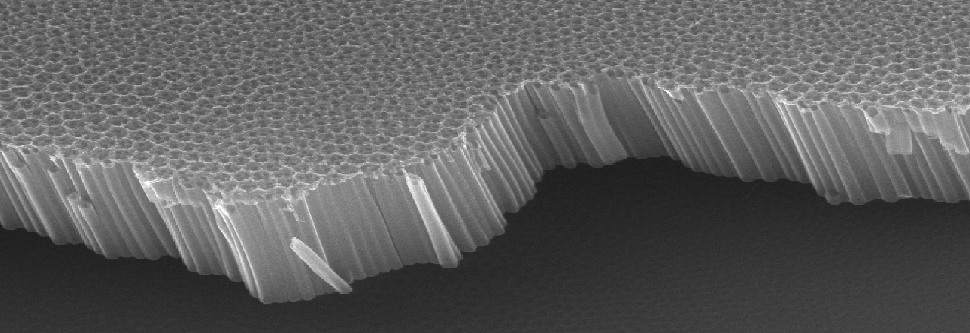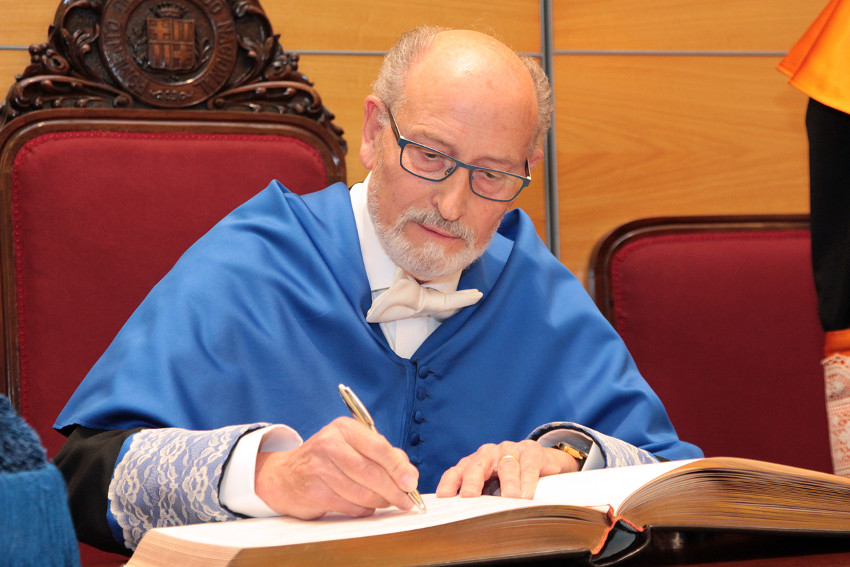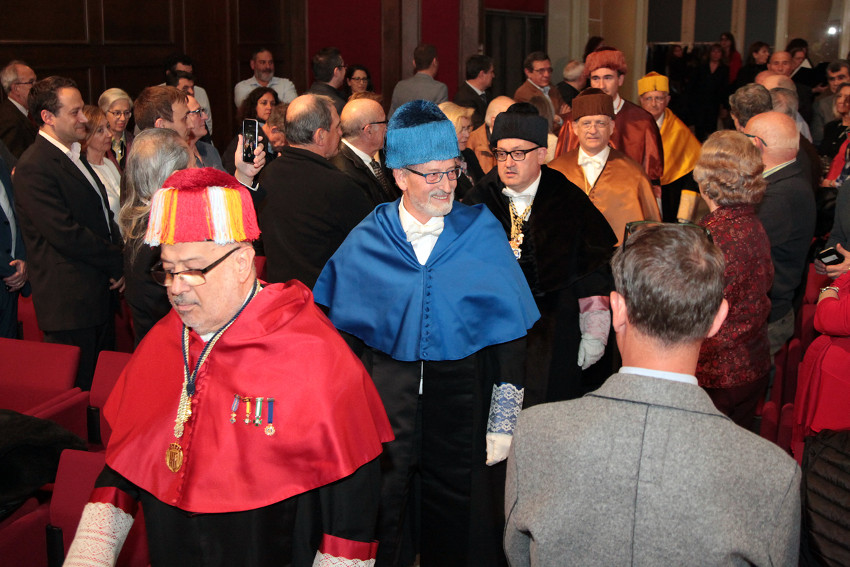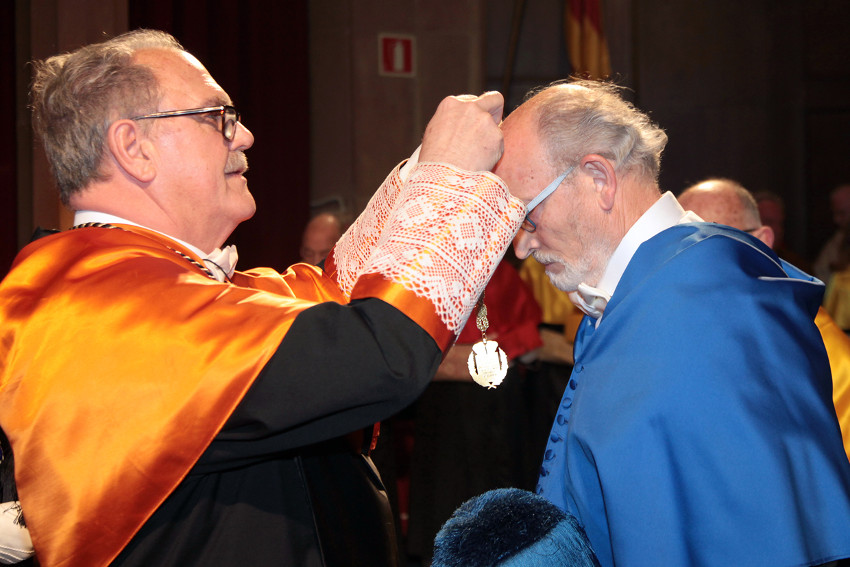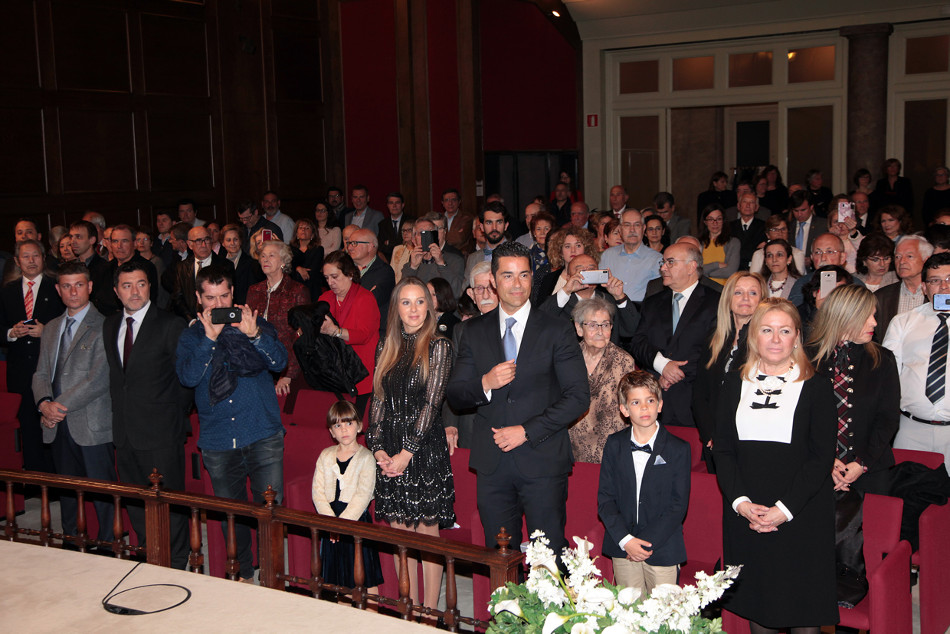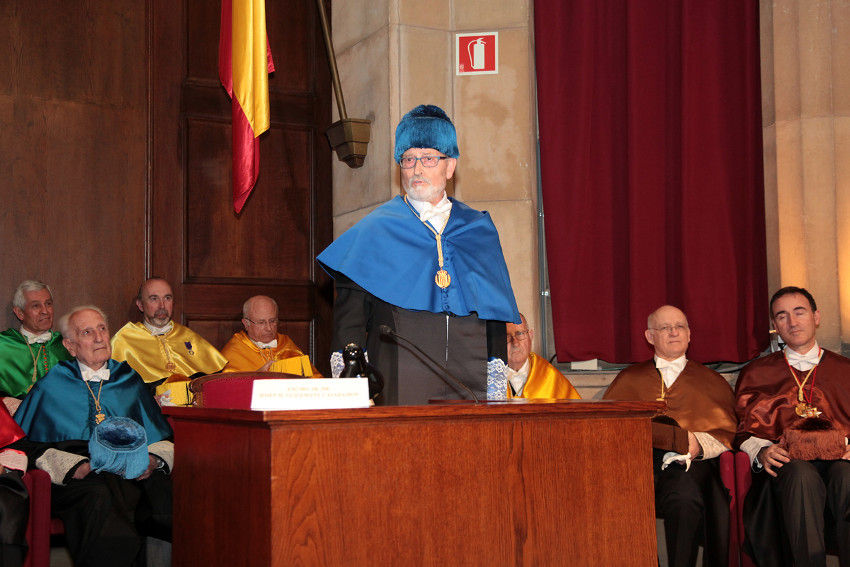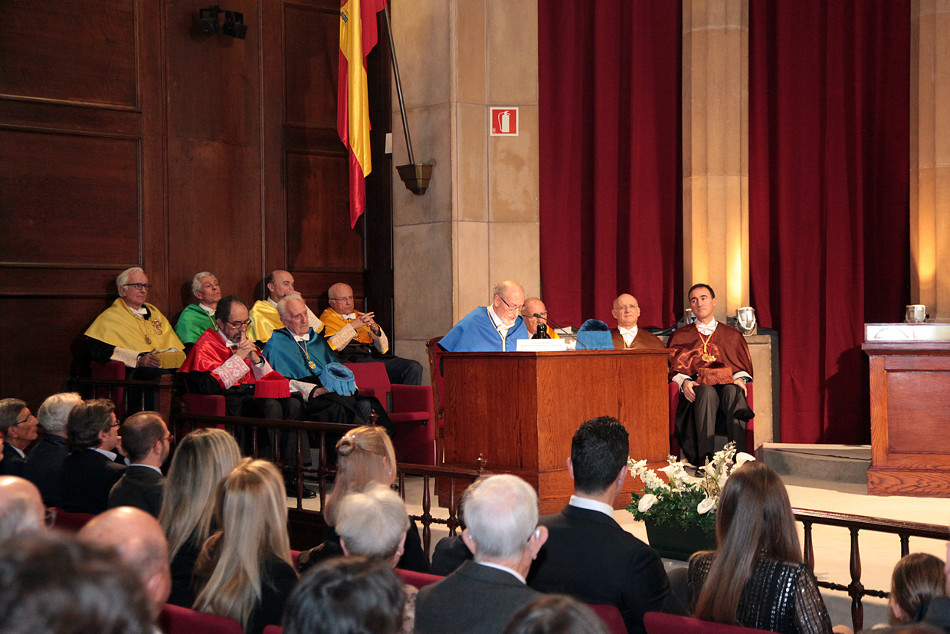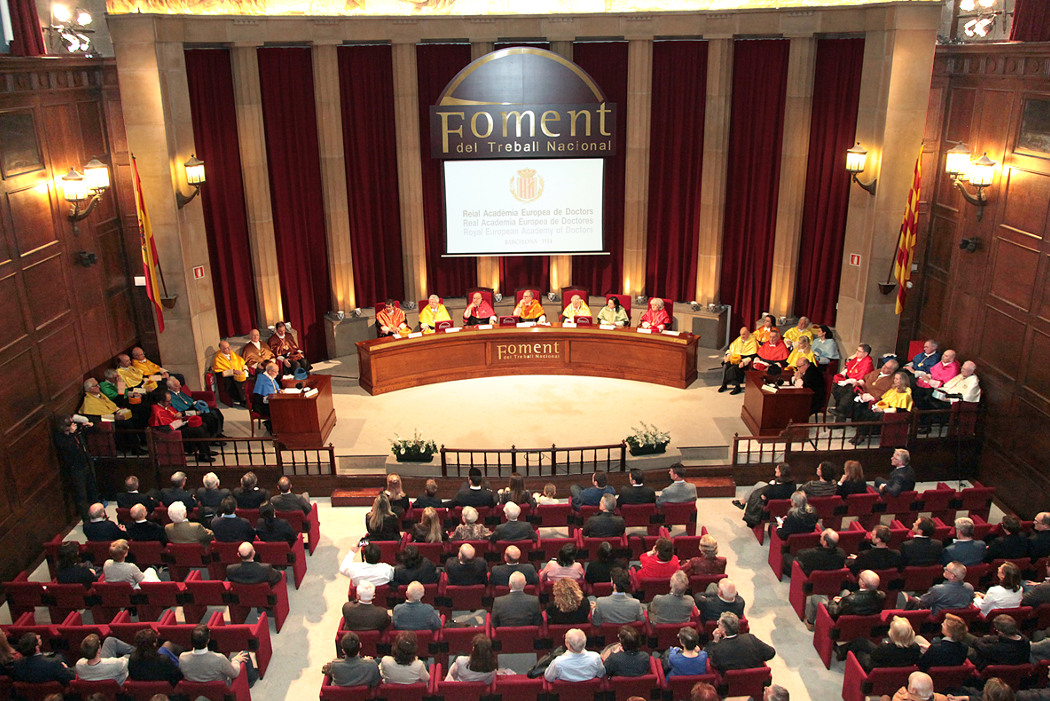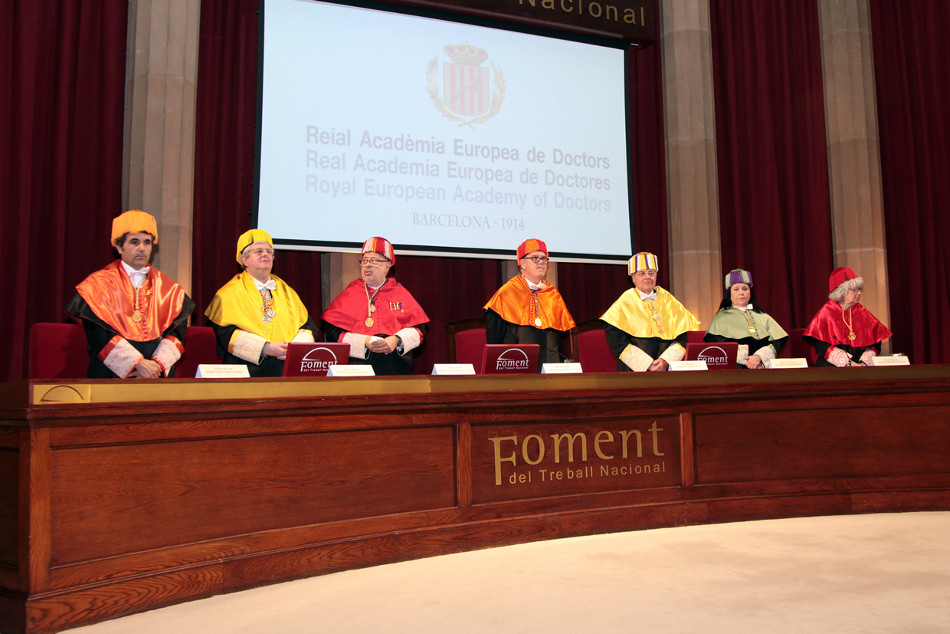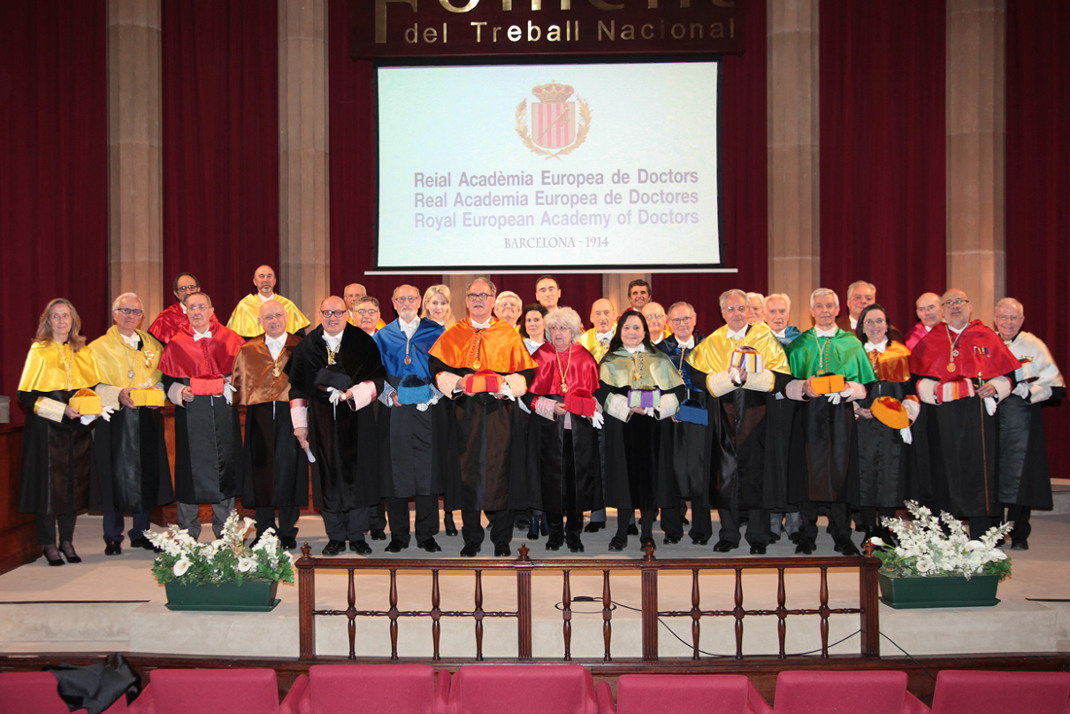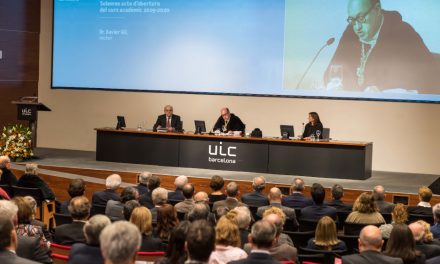Josep Maria Guilemany, architect of the creation of the Department of Materials Science of the University of Barcelona, enters as an academician
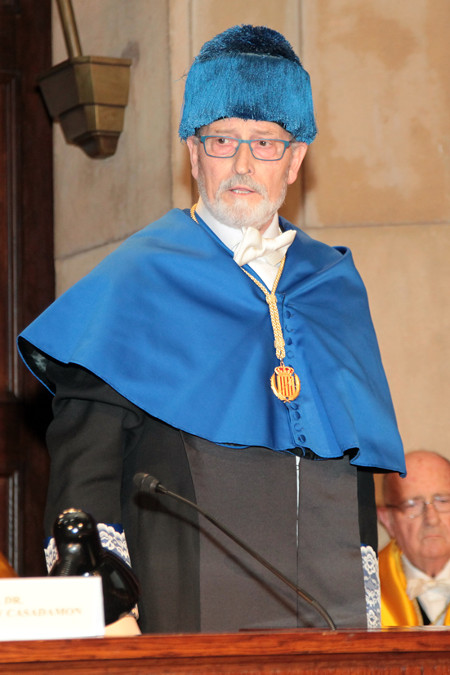 Josep Maria Guilemany, doctor in Chemical Sciences and professor of Materials Science and Metallurgical Engineering at the University of Barcelona, entered as a full academician of the Royal European Academy of Doctors-Barcelona 1914 (RAED) during a ceremony that took place on March 19 in the Assembly Hall of Catalan labour National Work Development, headquarters of the RAED. The recipient read the admission speech “De la belleza de los materiales a las artes y las tecnologías avanzadas para la sociedad innovadora del siglo XXI” (From the beauty of materials to the arts and advanced technologies for the innovative society of the 21st century). Javier Gil, a full academician and rector of the International University of Catalonia, answered on behalf of the Royal Corporation.
Josep Maria Guilemany, doctor in Chemical Sciences and professor of Materials Science and Metallurgical Engineering at the University of Barcelona, entered as a full academician of the Royal European Academy of Doctors-Barcelona 1914 (RAED) during a ceremony that took place on March 19 in the Assembly Hall of Catalan labour National Work Development, headquarters of the RAED. The recipient read the admission speech “De la belleza de los materiales a las artes y las tecnologías avanzadas para la sociedad innovadora del siglo XXI” (From the beauty of materials to the arts and advanced technologies for the innovative society of the 21st century). Javier Gil, a full academician and rector of the International University of Catalonia, answered on behalf of the Royal Corporation.
In his work, the new academician, architect of the creation of the Department of Materials Science and Metallurgical Engineering of the University of Barcelona and its director, makes a complete description of the materials that are used today for the most diverse functions. In this sense, he stresses the capital importance acquired in Spain the production and handling of many of these materials.
“That materials are essential to today’s society is evident, since it is enough to just look around and realise that we live in a world surrounded by materials, in fact, it is written that an important part of the economic, technical and social progress of a country depends on its level of materials engineering, together with the development of its energy and information science capacities”, Guilemany begins his reflection.
After reviewing and listing the characteristics of classic and fundamental materials in development and particularly in the industrial era, such as steel and foundries, light alloys, superalloys, ceramics, superconductors and polymers, the new academician focuses on new strategic materials such as biomaterials, materials for the generation of alternative energies, and materials for sport, leisure and industry 4.0; without forgetting to point out the challenges of the innovative society of the 21st century.
“Throughout the last fifty years we have been working on obtaining and processing traditional structural materials, in the knowledge and interpretation of their structure in solid state and understanding of their properties for an application in new frontiers of technology. Commonly metallic materials have occupied the centre of gravity and their deep knowledge in scientific basis has been characterised and built a surprising world of materials in which, today, metal, ceramics, polymers and its compounds conjugate and compete within their respective scope and limitations in the technological applications. We are linked to superconducting materials, new classes of semiconductor and magnetic materials, materials for medical applications in micro and gauge scales, materials for the generation of new alternative energy sources, materials with biomimetic applications that try to reproduce human skin, muscles, bones, even neurons. These are some of the new frontiers in our world and Materials Science and Engineering occupy the centre of gravity of this rapid and unstoppable evolution”, he says.

